Rare evidence of when and how Jerusalem was resettled after the Babylonian exile of 586 BCE has been discovered in an excavation in the City of David, just outside the Old City walls.
The two recent discoveries in an ongoing excavation in the Givati parking lot — a clay “official” seal impression and a strange DIY pottery sherd seal with fake writing — help illuminate the enigma that is 6th century BCE Jerusalem history. There are only 10 other similar artifacts discovered in Israel that date to the Persian period (circa 536 BCE-333 BCE).
“The Persian period is a black hole in archaeology,” Israel Antiquities Authority’s Dr. Yiftah Shalev told The Times of Israel on Tuesday. “Every time we find something, it’s like lighting a new candle — it gives a new light.”
Whereas the seal impression is made in an official imperial style, perhaps depicting a god, the crude clay seal is locally made, presumably by an illiterate underling. Combined, said Shalev, the seal and seal impression illustrate all levels of officialdom in the reviving city. They indicate, he added, that after the Babylonian destruction of Jerusalem and the exile of the Jews, Jerusalemites were rebuilding the city, including its bureaucracy, as told in the Bible.
KINDLY SUPPORT OUR BLOG BY BROWSING THE ADS
During the Persian period, Jews are traditionally thought to have accomplished a “return to Zion” after the exile that followed the destruction of the First Temple, as depicted in the Biblical books of Ezra and Nehemiah. The twin discoveries were uncovered in what appears to be a sort of shanty camp set up in the courtyard of an earlier Iron Age building destroyed by the Babylonians in 586 BCE and filled with two meters of debris.
“We knew there was a bureaucracy during the Persian period,” said Shalev. But the two seals — evidence that officialdom continued in the ruined city — represent “the first time that these things are shown in context in Jerusalem.”
Shalev said they date to the start of the Persian period and illustrate “how people are beginning to rebuild.”
While there is no vacuum in the historical record and it’s unlikely that the city was ever completely abandoned, Shalev explained that the excavations show that the refugees of the Babylonian conquest used debris from the rampant destruction to create new, small homes in ancient Jerusalem’s outskirts. The makeshift homes would have been surrounded by ruin, said Shalev.
“What we see probably is an indication for the early resettlement in the area [by Jews], but I’m saying this cautiously,” said Shalev.
The seals were found in the resettled area and are rare evidence of a burgeoning bureaucracy in Jerusalem after the destruction, during the slow rejuvenation of the city, said Shalev.
In a video released Tuesday with the Israel Antiquities Authority press release, excavation co-director Tel Aviv University Prof. Yuval Gadot explains that there is scant physical evidence for this period spanning from 536 BCE-333 BCE, specifically in Jerusalem, but also generally in Israel.
“Discovering these artifacts in an archaeological context which can be dated with a high probability is very rare,” said Gadot and Shalev in a joint statement.
“The finding of the stamp and seal impression in the City of David indicates that despite the city’s dire situation after the [Babylonian] destruction, efforts were made to restore the administrative authorities to normal, and its residents continued to partly use the structures that were destroyed,” said the archaeologists.
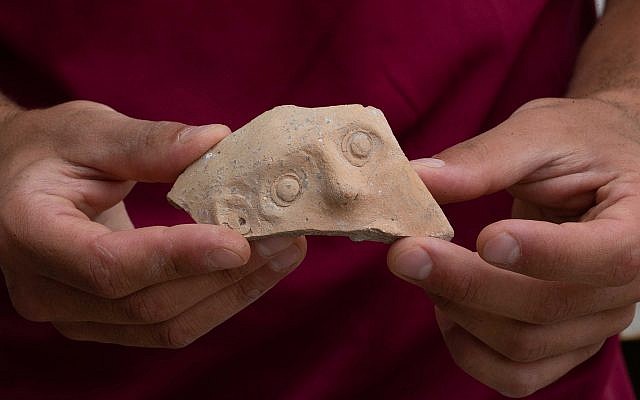
This fragment of a Persian-period (4th – 5th century BCE) Bes-Vessel was discovered in a large refuse pit in the City of David’s Givati Parking Lot dig, in Jerusalem. (Eliyahu Yanai, City of David)
Also within the same layer was discovered a trove of fish bones — foodstuff that would have been imported into the city — Persian period pottery, and a “Bes-vessel.” With his googly eyes and protruding tongue, a bearded fat dwarf deity called Bes adorned many ancient Near East residences, driving away evil spirits through laughter.
Shalev said the relatively large 4.5 centimeter (1.8 inch) seal impression looks to have been made from an official Babylonian-style seal. Due to its size, the impression was likely used to seal a large container, versus a scroll. The impression depicts the image of a person sitting on a large chair with one or two columns in front of him. According to the IAA press release, the character is probably a king and the columns are the symbols that represent the gods Nabu and Marduk.
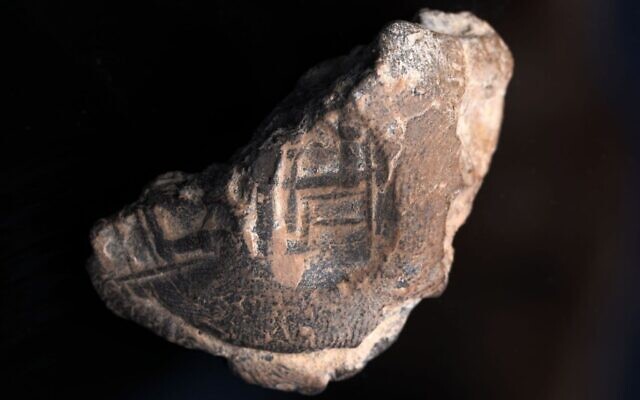
Stamp seal featuring a man sitting on a big chair (maybe a king; in front of the man are pillars. Discovered in the City of David Givati Parking Lot excavations. (Shai Halevy, Israel Antiquities Authority)
The DIY clay seal was made from an 8-centimeter diameter reused pottery sherd. Shalev called it a “strange item” and said it appears that someone took a piece of a broken vessel and reused it, while carving into it “curved figures” that were made to look like letters. He called the pseudo-epigraphic seal “a very unique item” that appears to have been “very local” in its make, as opposed to the official Babylonian-style impression.
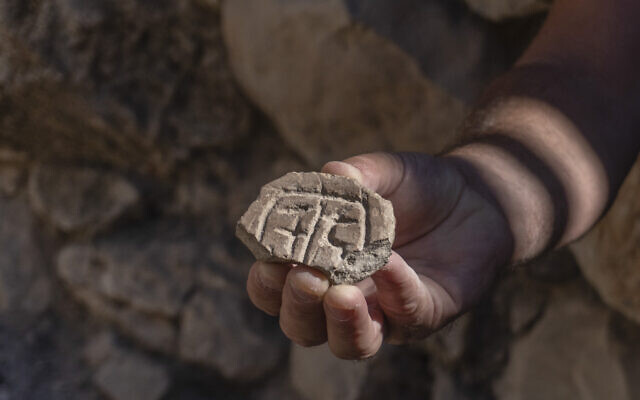
Seal made out of a piece of clay from the Persian Period discovered in the City of David Givati Parking Lot excavations. (Shai Halevy, Israel Antiquities Authority)
According to biblical history, the Babylonian conquest of Judah in the late 7th century led to three waves of exilic deportations from the Holy Land. By 586 BCE, Jerusalem, now part of the Babylonian province of Yehud, was pillaged, the First Temple destroyed and much of the land’s citizenry and ruling and priestly classes deported. Eventually, the Persians conquered the Babylonians in 539 BCE, immediately after which King Cyrus the Great declared that the Jews may return to their homeland.
But what happened in Jerusalem after the Babylonian destruction and into the Persian era is fodder for ongoing archaeological debate.
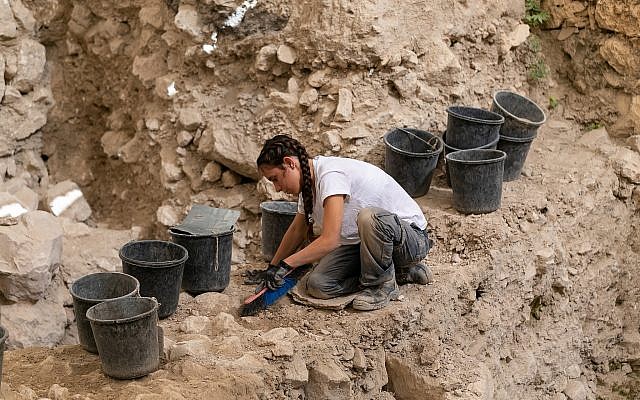
The archaeological excavations in the Givati Parking Lot in the City of David. (Eliyahu Yannai, City of David)
“It’s hard to tell when the Jews resettled,” said Shalev. “As little as we know about the Persian period, we know even less abut the Babylonian period.”
The new finds cannot strictly attest to which peoples were living in the rubble of Jerusalem — Jews who returned to Zion, or others, including Persian officials. Likewise, the dating of the artifacts is accurate only to within over a century; they were found in a layer that is sandwiched between the Babylonian destruction of 586 BCE below and evidence of the 4th century found above.
Carbon dating this period is “tricky,” said Shalev, but the IAA is working with the Weizmann Institute and hopeful that in the future they will be able to pinpoint the dating of carbon materials taken from the seals’ context, including the fish bones, which signal the start of new wealth in the landlocked city.
“I think that more than just the items themselves is the context they were found in. We see what happens to Jerusalem from the first resettlement to people slowly slowly starting to rebuild the city, including administration,” said Shalev.
KINDLY SUPPORT OUR BLOG BY BROWSING THE ADS
THANKS SO MUCH, IT MEANS A LOT ESPECIALLY IN THESE DIFFICULT TIMES!




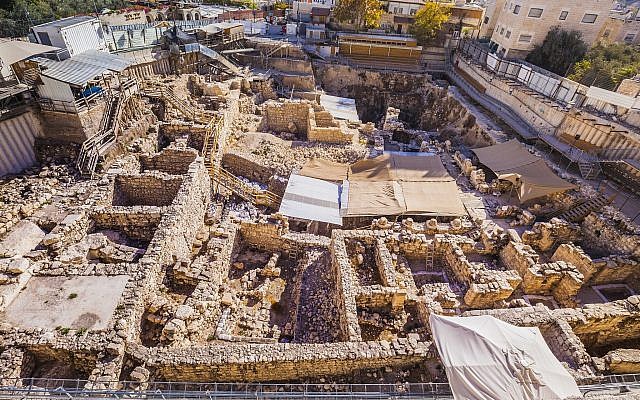
No comments:
Post a Comment